Pochampally Handloom Village
1. Introduction
Silk, the queen of textiles dominates the textile industry with its Cluster, sensuousness, and glamour. The silk sarees of India are among the living examples of the excellent craftsmanship of the weavers of the country. The artistic and aesthetic sense of Indian weavers is not content with striking colors they choose for the fabrics but lies in their mastery over the creation of floral designs, beautiful textures, fine geometry, and the durability of such work. The weaver not only weaves with yarn, but with intense feeling and emotion. Indian handloom silk sarees known for their unique features like beautiful color combinations, intricate designs, and wonderful motifs, tops the demand of the domestic market. In India, there are a number of silk weaving centers spread all over the country, known for their distinct and typical style of weaving. South India is the leading silk producing area of the country also known for its famous silk weaving enclaves like Kancheepuram, Dharmavaram, Arni, Pochampally, Gadwal, etc. The beauty of silk is the key to having wonderful silks. India's cultural diversity is perhaps best reflected in its handloom textile varieties, from Patola and Mashru in Gujarat, Gulbadan in West Bengal and Saktapar in Orissa, Chettinad and Kancheepuram in Tamil Nadu to Narayanpet and Pochampally in Telangana. Handloom weavers for thousands of years created a tapestry of designs and textures that have been the pride of India. But today, much of this treasure is lost to time and to the advances in technology. Handlooms are losing out badly in several parts of India and the skills are vanishing. The intimidation posed by various developed countries has made even the silk producers in India to respond and protect their silk related products under the Geographical Indication Act.
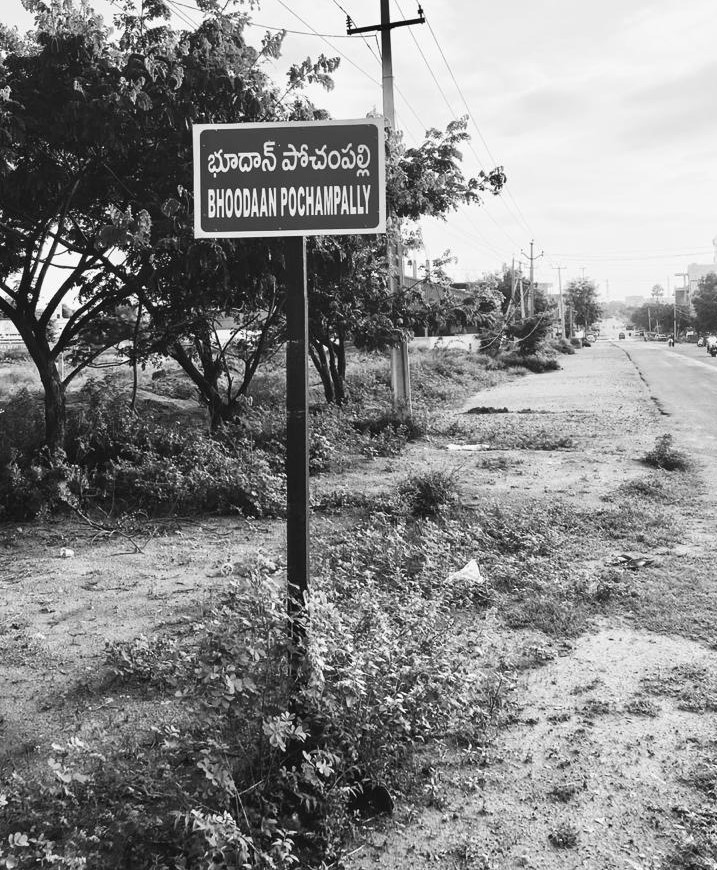
2. Profile of Pochampally
Pochampally is a Municipality situated in the district of Yadadri Bhuvanagiri in Telangana and is popularly referred to as the 'Silk City of India' for its beautifully crafted silk Ikat sarees and fabric. Pochampally is most popular for its Ikat style of saris and material and the world knows this quaint town for its spectacular Ikats. Pochampally, a cluster of 80 villages, is the place where threads and colors find their way into the hands of skillful weavers and meander into the market as beautiful sarees and dress material. Spread over an attractive and charming part of the Deccan plateau, the village is around 50 km from Hyderabad, the capital city of both the states i.e., Telengana and Andhra Pradesh. Pochampally is surrounded by lush green fields, beautiful hills, and big water ponds that receive water from the river Musi flowing nearby. Having earned a name to reckon with in the map of popular weaving clusters of India. Though there is a change in the lifestyle of the people over a period of time, we still find the rural atmosphere here. Pochampally is a typical weaving village and predominantly a Padmashali village, where the traditional weaving community is strong in number. Pochampally is the single largest handloom tie and dye cluster with about 2000 Pit looms and around 5000 artisans. Usually, Pochampally handlooms are made in cotton, silk, and Sico - a mix of silk and cotton. It is a treat for the eyes to see the artisans work.
3. History of Pochampally silks
Pochampally is popularly known as Bhoodan Pochampally. Acharya Vinobha Bhave started the Bhoodan Movement (Land Donation) from this village. Pochampally silk saree manufacturing history goes back to 1970 when it was decided by some village headmen of Pochampally to weave silk along with cotton (cotton weaving was being done since very long back), to make a better living. They have sent two young weavers to Bangalore to learn the secrets of the art. This was the beginning of a revolutionary era in the Pochampally handloom industry, which led to the eventual dominance of the Indian tie and dye patola Industry. Unlike the Orissa industry, the weaving of pochampally sarees appears to be a modern development without strong indigenous roots. The genesis of the decision to enter into new realms of silk weaving can be attributed to a new era, in the history of Pochampally ikkat. It is believed that the ikkat technique was brought to Pochampally from Chirala, another town in Andhra Pradesh, a couple of generations ago, perhaps as early as 1915. The origin of this technique is not very clear, but it appears to have been learned and was not indigenous to the region. According to one version, weavers from Chirala who migrated to Nalgonda brought this technique of tie and dye with them. Another view holds that, the Nizams encouraged few weavers of Mashroo (brocaded cloth, with cotton inside and silk outside) here and that the Ikat technique developed out of that. Some say that local weavers went to Chirala to learn the technique, but found it difficult to execute the double Ikat weaving. So the weavers in Pochampally started only with warp Ikat and only much later worked on double Ikat. The success of such Ikat saris in cotton led to experiments in silk as well. Silk Ikat saris from Pochampally thus became a generic name for Andhra Ikats. Pochampally products are handcrafted to perfection by skilled artisans who are endowed with critical skills in intricate designs, having decades of experience behind them in their respective fields. In certain cases, these masterpieces can take up to one hundred and twenty days to take final shape, to the satisfaction of our craftsmen.
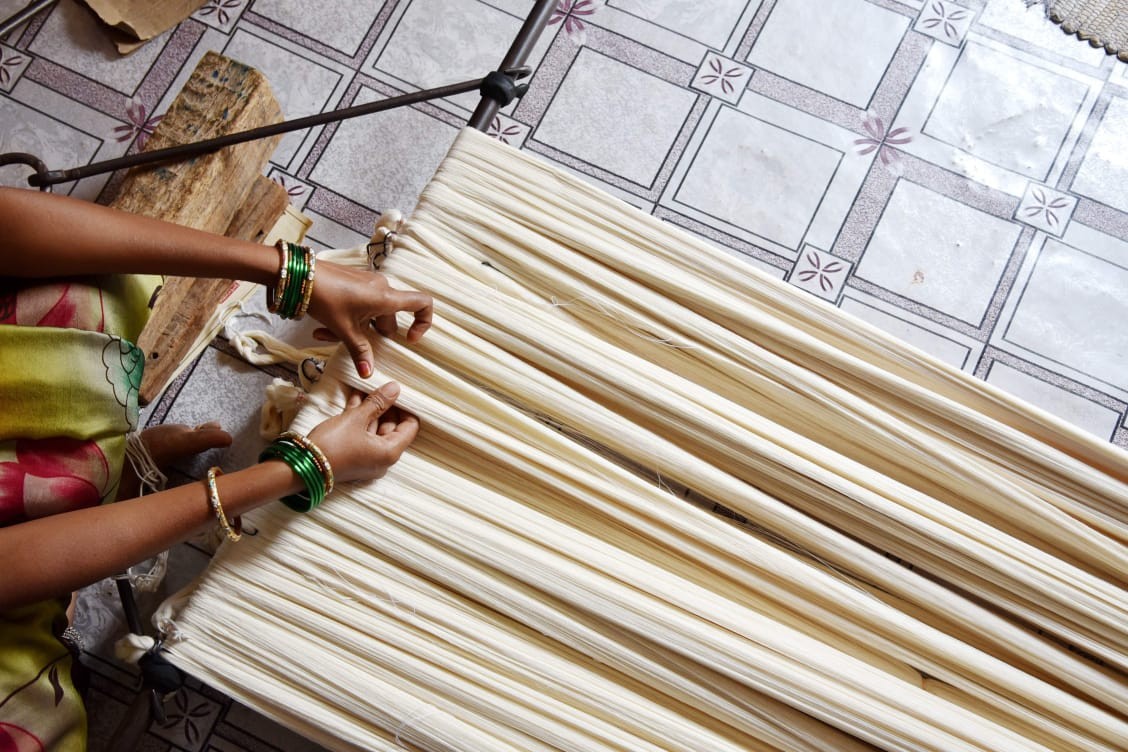
4. Production Process of Pochampally silks
Weaving a Pochampally sari is an art. Pochampally saree is an interesting collage of tradition, history, heritage, and nowadays widely known for its modernity in design. The weavers of pochampally are popular for their traditional and geometric patterns in the Ikat style of dyeing. Ikat weaving involves an 18-step sequence of tying and dyeing sections of bundled yarn to a predetermined intricate colour pattern prior to weaving. The tied yarn is dipped in different colored dyes to produce hued patterns and thereafter is woven into the fabric. The uniqueness in the Pochampally weave relies on the transfer of a design onto the warp and weft first, which are then woven together to get the required design. The fabric designs are visible in the dyed threads. The raw silk is degummed. Degumming is the process of removing the sericin, or silk gum, from silk. Removing the gum improves the sheen, colour, hand, and texture of the silk. Then the silk is to be transferred from hanks to bobbins. The skill of the artisans can be seen here while winding the silk from hank to bobbin. After winding it onto the bobbin, the next phase is the preparation of warp and weft on the Tie and Die frame. IKAT - is a type of weaving where the warp or weft or both are tie-dyed before weaving to create designs on the finished fabric. Great care must be taken in tying resist areas with water repellent material such as bicycle inner tubes cut into strips. Designs generally are worked out on graph paper. With weft and warp in mind, a design on a graph paper is visualized in this style of weaving. Later, the design is transferred onto the weft and warp. The threads of the warp and weft are measured carefully, and then tied and kept in the dye solution.
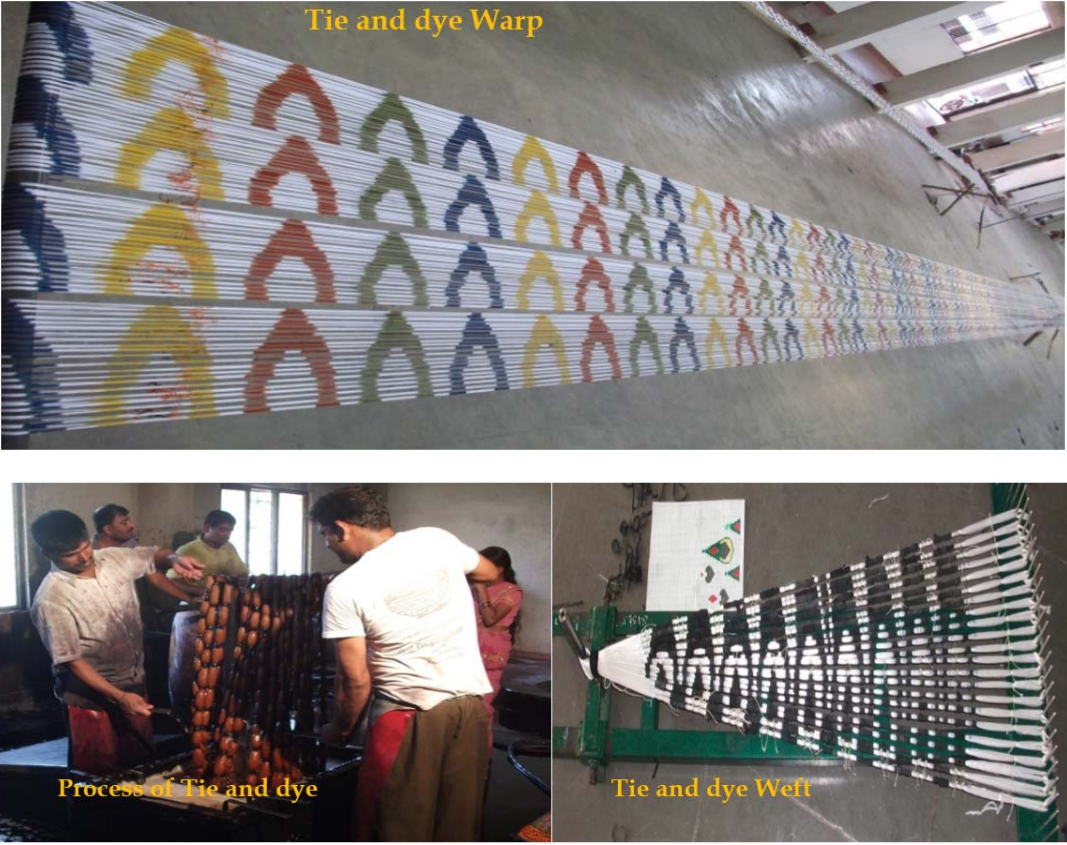
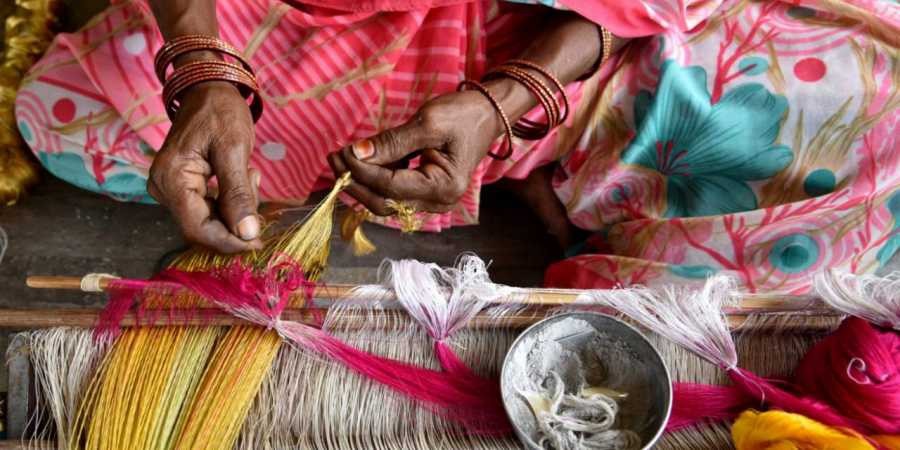
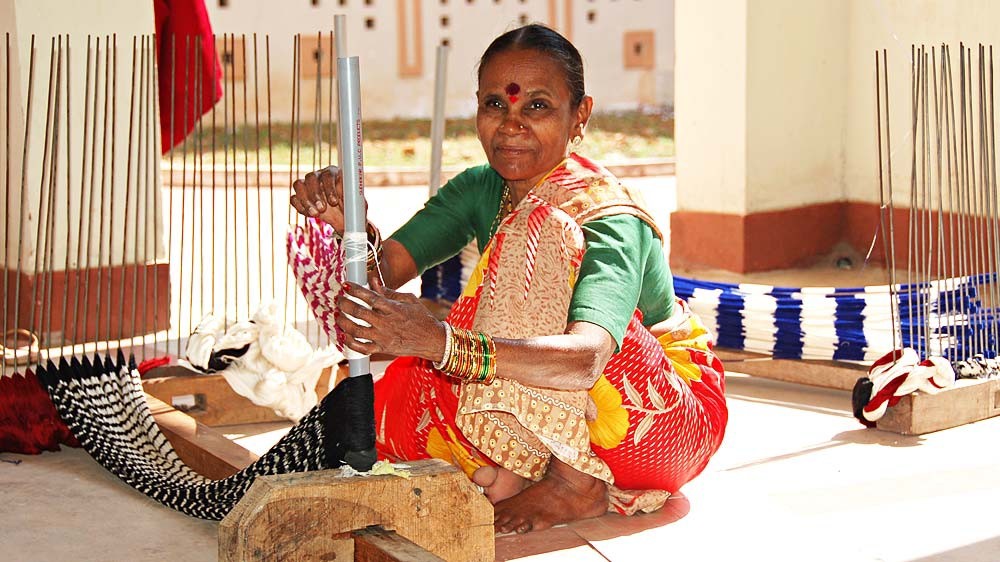
5. Rural Tourism Complex
Our rich heritage and tradition lie preserved in the villages. Some of the villages have gained more recognition in terms of culture, its history, its art, and their festivals or simply because of their scenic beauty, Pochampally one such village recognized well with world-famous IKAT weaving. In view of this, the Ministry of Tourism established the Rural Tourism complex at Bhoodan Pochampally, Telangana. Pochampally is one of the United Nations Development Programs (UNDPs) of 36 rural tourism sites, and is supported by the Ministry of Tourism. The rural tourism complex is situated next to a serene lake called Pochampally Cheruvu and looks more like a sprawling bungalow, but when you look at the huge gate you see the signboard of the Rural Tourism complex. The tourism complex houses the Ikkat weaving museum amphitheater to perform local art forms and guest house. The museum of the rural tourism complex displayed with all the varieties of ikat weave like dress materials, sarees, variety of ikat designs, portraits of our National leaders like Indira Gandhi, Vinobha Bhave in ikat weave and different devices of an ikat weave. 7. Geographical Indications to Pochampally Handlooms The globalization has brought about enormous challenges to the trade and industry. Geographical Indication (GI) Act, 1999 by the Government of India has created an avenue for the protection of these unique products of the country. The GI Act stipulates the protection of the market of the producers and safeguards the interests of the consumers of these unique products through registration and taking infringement action against the infringers. It is believed, that the IPR Protection of unique textile products of the country with a predetermined market linkage strategy would help in brand the building of the product, providing market linkages, generating more employment opportunities and enhanced income to the stakeholders. The famous Pochampally saree has won Intellectual Property Rights protection or Geographical Indication Certification in 2005. It is the first traditional Indian craft to receive this. And recently, Pochampally village was selected as one of the World Best Tourism Village by United Nations World Tourism Organisation (UNWTO).
